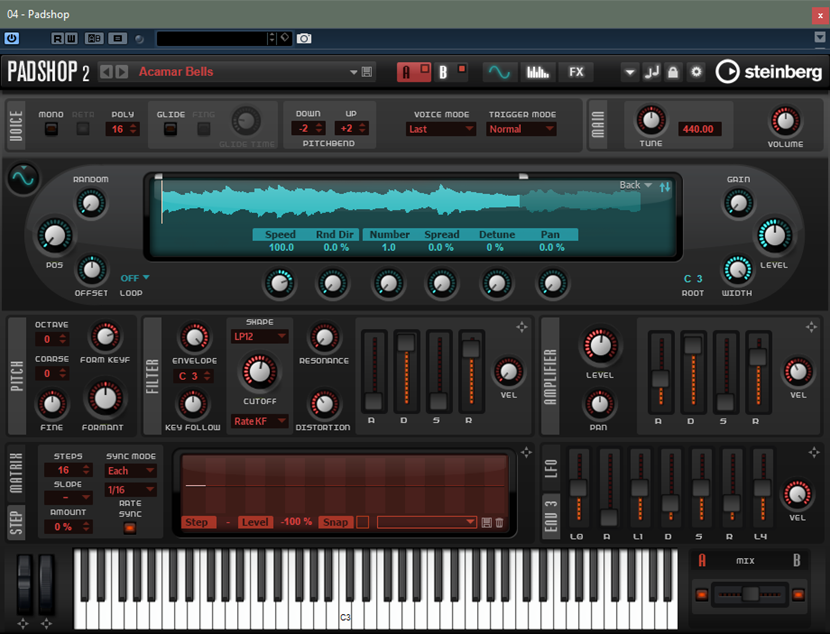Padshop
Padshop 2 is a sophisticated granular and spectral synthesizer. This instrument allows you to create complex sounds that can drastically evolve over time.
It features two completely independent layers that each use a set of samples as grain or spectral oscillator sources. On each layer, you can work with factory samples or import your own. This way, you can create interesting and very unique sounds, such as combining slowly moving pads with rhythmic parts. Thanks to the new arpeggiator, you can also produce new, advanced patterns.
The Filter section provides 24 different filter shapes, including low-pass, high-pass, band-pass, and band-reject filters. The integrated filter distortion can produce analog tube distortions or hard-clipping effects, or reduce the bit depth or sample frequency. Three envelopes (Filter, Amp, and Env 3), four LFOs (two monophonic and two polyphonic LFOs), and the step modulator in Padshop can be used to modulate a large number of modulation destinations, now even via drag and drop.
The included modulation matrix features 16 freely assignable modulation rows. This allows you to create Note Expression modulation assignments that can be directly addressed from within Cubase, for example. To give the sounds the final polish, Padshop provides a three-stage effects section including EQ, chorus, flanger, ensemble, phaser, different delay effects that can be defined for each layer, and a global reverb effect.

Grain Oscillator
The grain oscillator uses granular synthesis. In granular synthesis, only short portions of a sample are played back. These so-called grains can be played back in any order. Each time a grain ends, a new one starts. To avoid discontinuities in the playback and to minimize artifacts, envelopes are applied to the grains. Very short grains produce sounds with an individual pitch. This means that you can also extract pitched sounds from samples without a distinct pitch, such as drum loops or sound effects. Sounds with longer grains usually play back with the pitch of the original sample.
Spectral Oscillator
The spectral oscillator analyzes the spectrum of the loaded sample, that is, the progression of the frequencies, amplitudes, and phases from the sample start to the end of the sample. The analyzed spectrum is used to generate a waveform for playback. When the play marker moves through the sample, dynamic progressions of waveforms are produced. You can also slow down the playback speed up to the point where only a static waveform is played back. Furthermore, Padshop allows you to modulate the playback position in the sample, which allows you to control the movement through the sample using LFOs, the step modulator, or the arpeggiator controller lanes, for example. The Purity, Inharmonicity, and Formant Shift parameters allow for extensive sound manipulations.